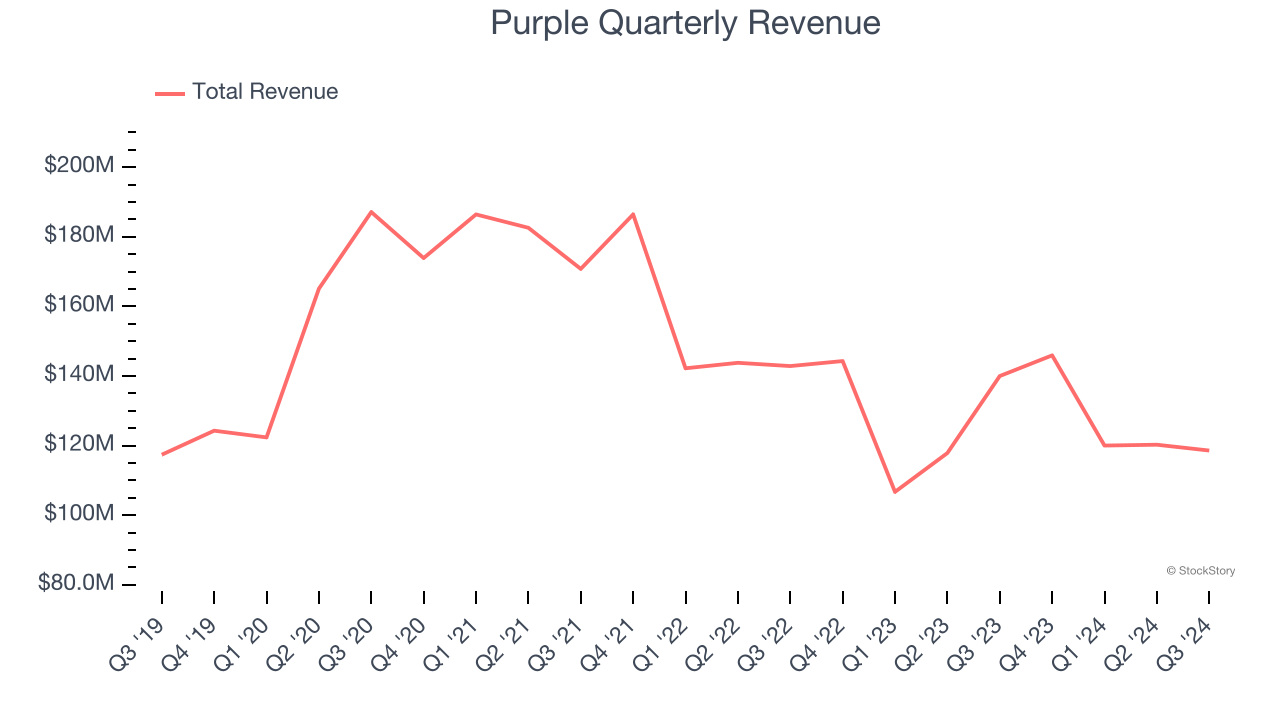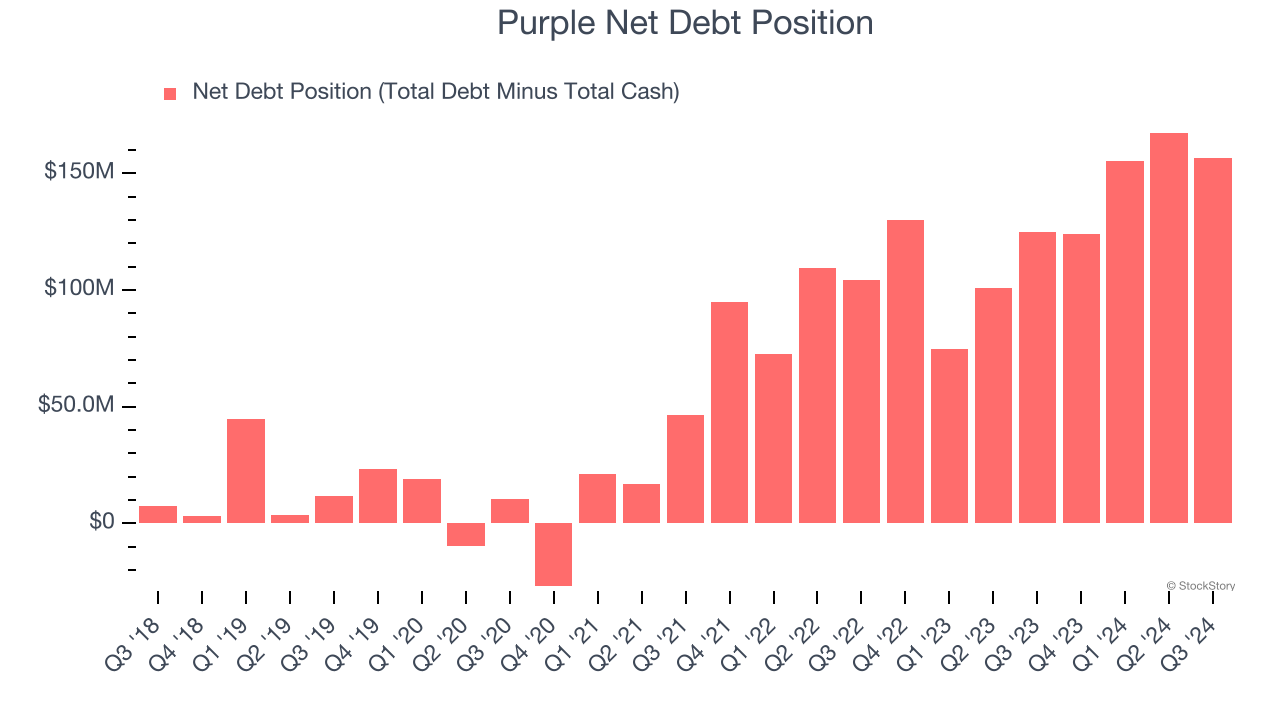
Since August 2024, Purple has been in a holding pattern, posting a small return of 1.6% while floating around $1.09. The stock also fell short of the S&P 500’s 16.8% gain during that period.
Is there a buying opportunity in Purple, or does it present a risk to your portfolio? Check out our in-depth research report to see what our analysts have to say, it’s free.
We're cautious about Purple. Here are three reasons why there are better opportunities than PRPL and a stock we'd rather own.
Why Do We Think Purple Will Underperform?
Founded by two brothers, Purple (NASDAQ: PRPL) creates sleep and home comfort products such as mattresses, pillows, and bedding accessories.
1. Long-Term Revenue Growth Disappoints
Reviewing a company’s long-term sales performance reveals insights into its quality. Any business can have short-term success, but a top-tier one grows for years. Regrettably, Purple’s sales grew at a sluggish 5.7% compounded annual growth rate over the last five years. This was below our standard for the consumer discretionary sector. 
2. New Investments Fail to Bear Fruit as ROIC Declines
A company’s ROIC, or return on invested capital, shows how much operating profit it makes compared to the money it has raised (debt and equity).
We like to invest in businesses with high returns, but the trend in a company’s ROIC is what often surprises the market and moves the stock price. Unfortunately, Purple’s ROIC has decreased significantly over the last few years. Paired with its already low returns, these declines suggest its profitable growth opportunities are few and far between.
3. Short Cash Runway Exposes Shareholders to Potential Dilution
As long-term investors, the risk we care about most is the permanent loss of capital, which can happen when a company goes bankrupt or raises money from a disadvantaged position. This is separate from short-term stock price volatility, something we are much less bothered by.
Purple burned through $35.25 million of cash over the last year, and its $179.9 million of debt exceeds the $23.4 million of cash on its balance sheet. This is a deal breaker for us because indebted loss-making companies spell trouble.

Unless the Purple’s fundamentals change quickly, it might find itself in a position where it must raise capital from investors to continue operating. Whether that would be favorable is unclear because dilution is a headwind for shareholder returns.
We remain cautious of Purple until it generates consistent free cash flow or any of its announced financing plans materialize on its balance sheet.
Final Judgment
Purple falls short of our quality standards. With its shares underperforming the market lately, the stock trades at $1.09 per share (or 0.2× forward price-to-sales). The market typically values companies like Purple based on their anticipated profits for the next 12 months, but it expects the business to lose money. We also think the upside isn’t great compared to the potential downside here - there are more exciting stocks to buy. We’d suggest looking at the most entrenched endpoint security platform on the market.
Stocks We Like More Than Purple
With rates dropping, inflation stabilizing, and the elections in the rearview mirror, all signs point to the start of a new bull run - and we’re laser-focused on finding the best stocks for this upcoming cycle.
Put yourself in the driver’s seat by checking out our Top 9 Market-Beating Stocks. This is a curated list of our High Quality stocks that have generated a market-beating return of 175% over the last five years.
Stocks that made our list in 2019 include now familiar names such as Nvidia (+2,183% between December 2019 and December 2024) as well as under-the-radar businesses like Sterling Infrastructure (+1,096% five-year return). Find your next big winner with StockStory today for free.






